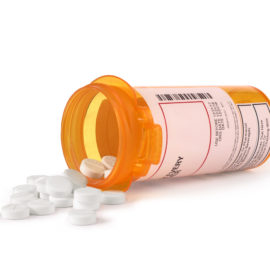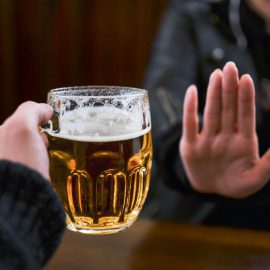What is half-life of a drug? The elimination half-life of a drug is a parameter that determines the time it takes for the amount of a drug’s active substance in the body to reduce by half. This reduction is influenced by how the body processes and eliminates the drug. The half-life can vary significantly from one drug to another, ranging from just a few hours to several days or even weeks. Interestingly, regardless of the dosage or duration of drug use, the half-life remains constant for a particular drug, so what does half-life of a drug mean?
The importance of a drug’s half-life lies in its relation to withdrawal problems. Drugs with short half-lives often lead to more severe withdrawal issues, as the drug quickly leaves the body after discontinuation. Drugs with long half-lives, by contrast, tend to produce milder withdrawal effects, as they take a more extended period to be eliminated from the body completely.
Understanding the drug half-life definition is especially beneficial for those experiencing withdrawal problems with a short half-life drug. In such cases, switching to a similar drug with a longer half-life might be a viable option. A drug with a longer half-life could be easier to taper off, providing a smoother transition. Beyond this, the half-life is a practical guide for determining how long it takes for a drug to reach a steady state of concentration in the body when starting the medication. Typically, it takes about five times the drug’s half-life to achieve a stable level. As the drug concentration becomes stable, early side effects may gradually diminish.
The half-life of a drug is an important metric used by clinicians and researchers for creating drugs and determining the proper dosages.
Typically, the preferred half-life of a medication is about 12-48 hours for once-daily oral drug dosages. This ensures that the drug’s therapeutic effects last throughout the day, while also ensuring that it’s easy for the patient to continue taking.
If the half-life of a drug is too short, a patient will have to take it more frequently which increases the risk of them forgetting to take it, and reducing the chances of the drug’s efficacy. On the other hand, a half-life that is too long may result in an extensive amount of drug build-up in the body and difficulty with elimination. This can also cause adverse effects, so it’s important that drug creators get the half-life of drugs right.
Now that we’ve covered the question, “what is half-life of drugs?”, we can move on to the absorption of drugs based on half-life.

Absorption of Drugs Based on Half-Life
The absorption of drugs is a process that determines how the drug enters the bloodstream and becomes available for the body to use. The concept of half-life also plays a role in drug absorption.
When a drug is administered, it goes through various stages of absorption, distribution, metabolism, and elimination, collectively known as pharmacokinetics. The half-life of a drug is primarily associated with the elimination phase, which is the process of the drug being removed from the body. However, the absorption half-life refers to the time it takes for the drug to reach half of its maximum concentration (Cmax) in the bloodstream after administration. This phase is especially important for drugs with delayed-release formulations, such as extended-release or controlled-release preparations.
In contrast to the elimination half-life, which deals with the decrease of the drug concentration in the body, the absorption half-life is concerned with the increase of drug concentration in the bloodstream until it reaches Cmax.
The absorption half-life can be influenced by several factors, including the drug’s formulation, route of administration, and the individual patient’s physiological characteristics. Some drugs may have a relatively short absorption half-life, meaning they reach Cmax quickly after administration, while others may have a longer absorption half-life, taking more time to achieve Cmax.
Understanding the absorption half-life of a drug can help inform dosing regimens, especially for drugs with delayed-release formulations. Healthcare professionals can use this information to determine the appropriate timing of drug administration and ensure that the drug reaches the desired therapeutic concentration in the bloodstream at the right time.

How to Calculate Half-Life of a Drug
The half-life of a drug is a measure of how long it takes for the amount of the drug in your body to reduce by half. This time depends on how your body processes and removes the drug. It can vary from a few hours to a few days, or sometimes even weeks.
Imagine you start taking Ambien. If Ambien has a half-life of 2 hours, it means that after 2 hours, only half of the Ambien you initially took will be left in your body. After another 2 hours (a total of 4 hours since you took it), only one-fourth of the original amount will remain. This process continues, reducing the amount of Ambien in your body by half every 2 hours.
Generally, it is considered that it takes about 5.5 half-lives for a drug to be fully removed from your body, and at that point, it is no longer effective. So, for Ambien with a 2-hour half-life, it would take approximately 11 hours (2 hours multiplied by 5.5) for the drug to be eliminated from your body.
The half-life of a drug is essential for a few reasons. Firstly, it can help predict how long the drug will stay in your system and how often you need to take it to maintain its effect. For example, if a drug has a short half-life, you may need to take it more frequently to ensure it remains effective. On the other hand, if a drug has a long half-life, you might need to take it less often.
Additionally, knowing a drug’s half-life can help understand potential withdrawal problems. Drugs with short half-lives might cause more withdrawal issues when you stop taking them, while drugs with longer half-lives may be easier to discontinue.
Keep in mind that the half-life can vary from person to person due to factors like age, weight, other medications taken, kidney function, liver function, and other medical conditions. So, it serves as a useful guide for estimating how long a drug may stay in your body, but individual variations can occur.
FAQs
Why is a drug’s half-life important?
The half-life of a drug is crucial because it indicates the time it takes for the concentration of the drug’s active substance in the body to decrease by half. Understanding the half-life helps determine the rate of drug elimination and the time required to reach steady-state concentrations or complete elimination. This information is valuable for dosage adjustments, avoiding drug accumulation, and managing drug withdrawal issues.
Does half-life affect drug absorption?
The half-life of a drug primarily reflects its elimination rate, not its absorption rate. That said, the half-life indirectly impacts drug absorption in the context of reaching steady-state concentrations. It takes approximately five times the drug’s half-life for it to achieve a stable level in the body when initiating drug therapy. A longer half-life means it will take more time to reach the steady state, while a shorter half-life may lead to quicker attainment of a stable drug level.
Is it better for a drug to have a longer or shorter half-life?
The preference for a longer or shorter half-life depends on the clinical context and the specific drug’s therapeutic goal. A longer half-life is generally advantageous for drugs intended for long-term maintenance therapy, as it results in more sustained and stable drug concentrations, reducing the frequency of dosing. On the other hand, drugs with a shorter half-life are preferred when rapid onset or offset of action is necessary or when avoiding drug accumulation is essential. Additionally, drugs with longer half-lives are usually associated with fewer withdrawal problems compared to those with shorter half-lives.
What does it mean if a drug has a half-life of 12 hours?
If a drug has a half-life of 12 hours, it means that it takes approximately 12 hours for the concentration of the drug’s active substance in the body to reduce by half. After another 12 hours, it will reduce by half again, and so on until the drug is eventually eliminated. Understanding the half-life of a drug helps determine dosing intervals, drug accumulation, and the time required to reach steady-state concentrations.

Get Treatment for Drug Addiction at Gratitude Lodge
At Gratitude Lodge in Southern California, you can access comprehensive drug addiction treatment programs. With pet-friendly rehab centers in Newport Beach and Long Beach, CA, we focus on whole-body recovery in a welcoming and inclusive setting.
The treatment journey at Gratitude Lodge starts with a supervised medical detox program, ensuring the safest and smoothest pathway to detoxification and ongoing recovery. After completing detox, you can seamlessly transition into a 30-day inpatient program. All treatment programs at Gratitude Lodge draw from a range of evidence-based interventions, including MAT (medication-assisted treatment), psychotherapy, group therapy, individual therapy, family therapy, holistic therapy, and aftercare support.
To take the first step towards ongoing recovery from drug addiction, call 800-994-2184 today.




























